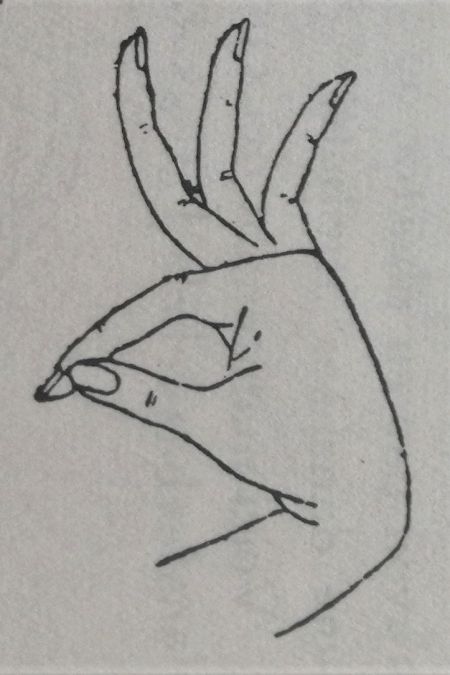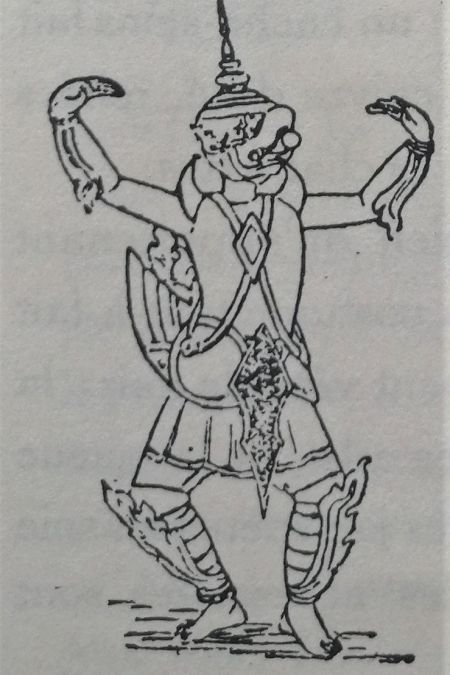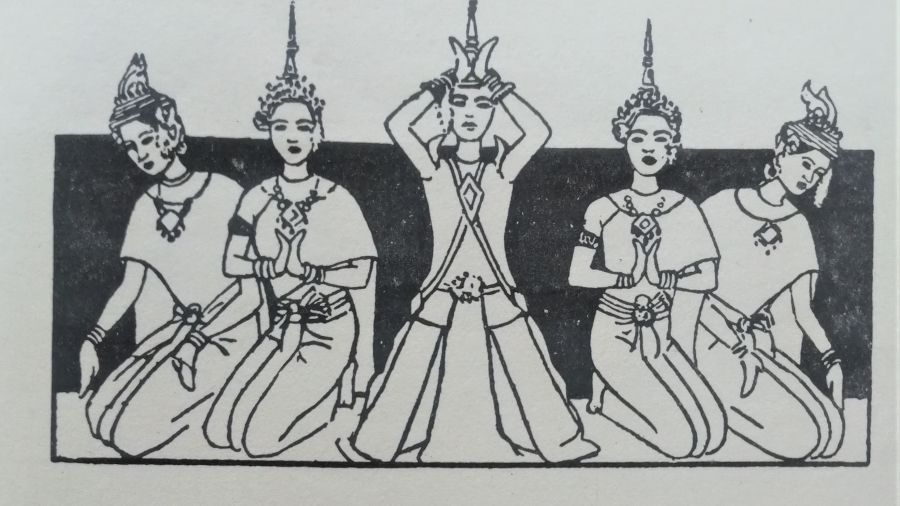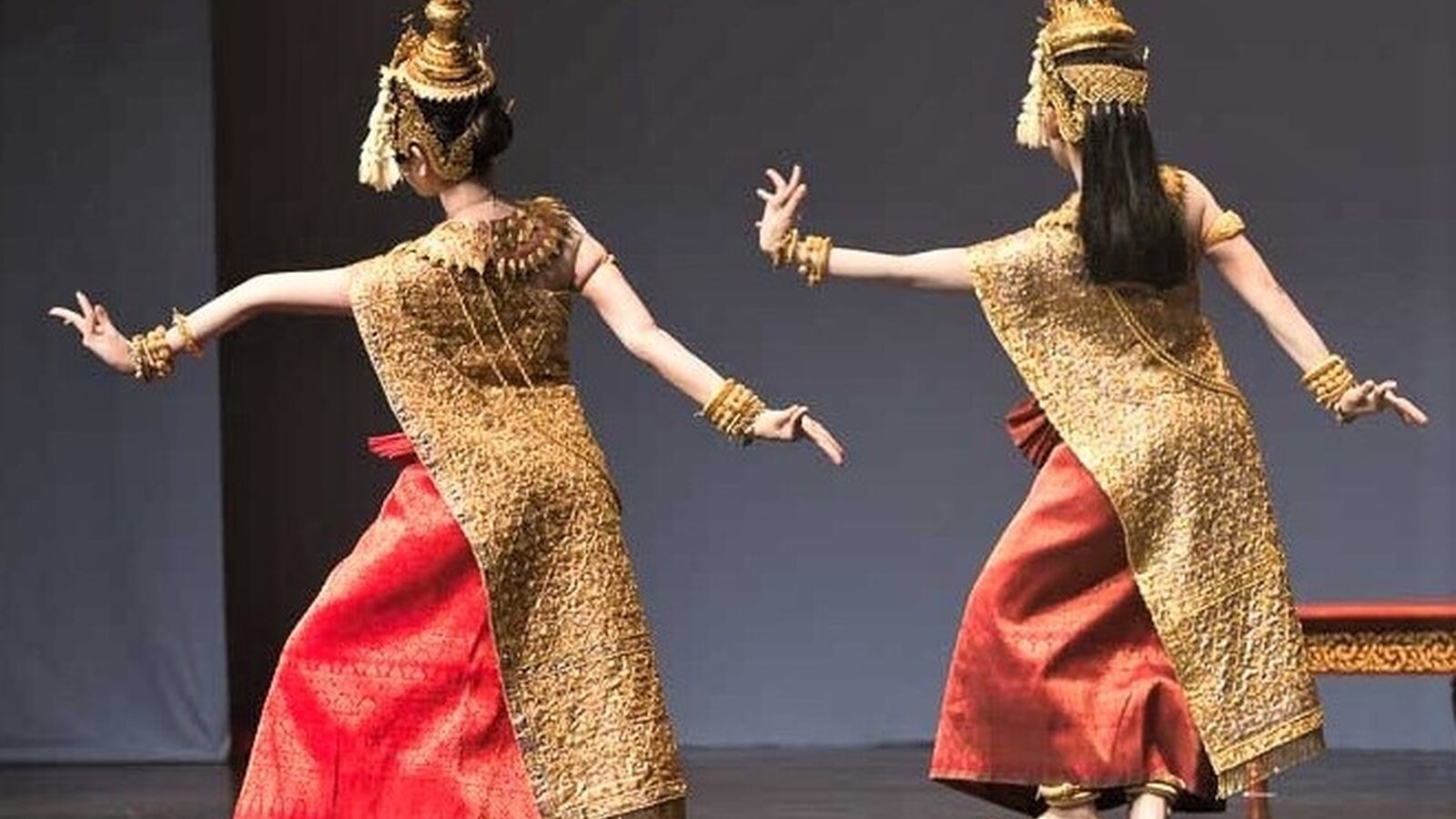
With his profound knowledge of the Reamker (Khmer version of the Ramayana epic), and his access to the Royal Palace where the dancers of the Royal Ballet were still strictly confined, Samdech (Lord) Chaufea Veang Thiounn (1864-1946) was well-equipped to attempt a comprehensive and vivid study of Cambodian classical dance techniques and choreography.
Contemporary with George Groslier's important essays on the same subject, the book Danses cambodgiennes (Cambodian Dance, 1926) is beautifully illustrated by Sappho Marchal, the daughter of Angkor Curator Henri Marchal who, at the same period, was carefully studying the costumes and ornaments of Angkor Wat sculpted apsaras.
A copy of the 1968 edition, revised by Jeanne Cuisinier for the Buddhist Institute in Phnom Penh, is now at the Angkor Database Library, a resource developed by Templation Angkor Resort. You can read more about this remarkable work here.


A Groslier Street (again) in Phnom Penh?
This rediscovery of Samdech Chaufea Veang's work coincidentally occurs when a controversy has recently raised around the suggestion of naming (or re-naming) after George Groslier - the famous artist, scholar and founder of the Phnom Penh National Museum -, the street leading to this precious building.
The first French national born on Cambodian soil, George Groslier has also thoroughly studied the Cambodian Royal Ballet art form. Even if he could not have the same insider's knowledge than Thiounn's, his essays on Khmer classical dance express a similar sensibility. Both authors knew of and praised Sappho Marchal's iconographic work.
With the National Museum 100th anniversary next year, some researchers such as the publisher and Angkor specialist Kent Davis have put forward a proposal: why not giving back Groslier's name to Preah Ang Eng Street, fronting the building? After all, that same street had been inaugurated as 'Rue George Groslier' by Cambodian and French officials -- and the King of Cambodia in person -- on October 4, 1946, one year after the respected scholar had died under duress in a Japanese concentration camp...
In a Khmer Times article last month, Taing Rinith described the controversy currently developing among academic and artistic circles: some find perfectly right to recognize (again) Groslier's contribution to the study and promotion of the Cambodian culture, while others object to what they consider an attempt in some "justification of colonialism".
What can be said for sure: the work of generous and unprejudiced researchers and artists such as Samdech Chafea Veang, George Groslier, Sappho Marchal and so many more, is an unvaluable legacy for the younger Cambodian generations, and for all art lovers around the world.

(all illustrations by Sappho Marchal, from the book Danses Cambodgiennes)



